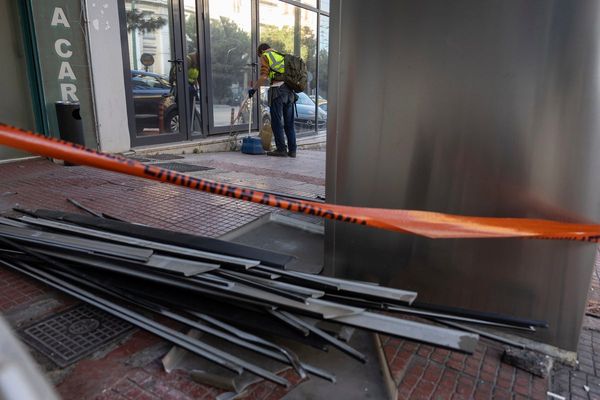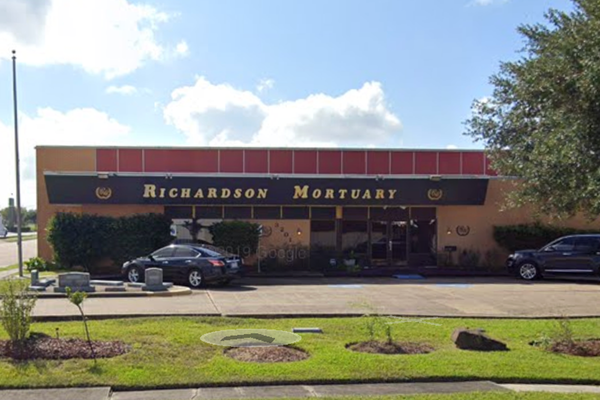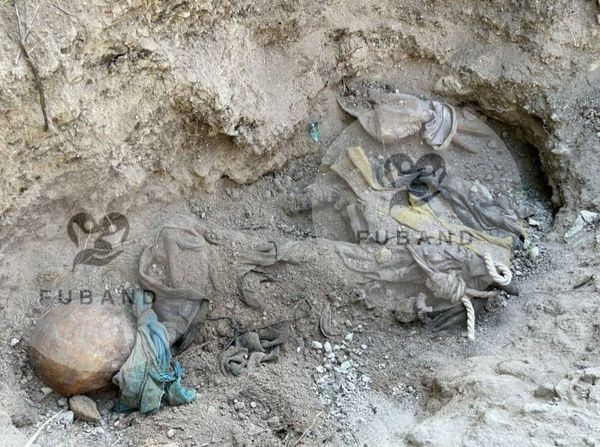
Hurricane Helene made landfall in the early hours of Friday 27 September, in Big Bend, Florida. Meteorologists at the National Hurricane Center had been watching it building for a week, as it moved away from Nicaragua, up past Grand Cayman, Cancún, and Cuba, and the governor of Georgia, Brian Kemp, had declared a state of emergency on the Tuesday afternoon.
“The current forecast for Hurricane Helene suggests this storm will impact every part of our state,” Kemp said, but in Augusta, over in the east of the state, people felt safe, they had not had a hurricane here in almost 100 years, and this one was forecast to pass it by.
Until it took a turn north‑northeast, and started to accelerate. It hit the city at a hundred miles an hour, the anemometers at Augusta airport stopped working at 82mph, right around the time the power went down. “Augusta ended up sitting under the absolute worst part of the storm,” reported the National Weather Service. It was not just the wind – more than 12 inches of rain, an entire winter’s worth, fell in the space of a few hours. People talk about how the pop-and-flash of the power lines going down lit up the sky.
When it was over, more than 30 people had died in the city and the surrounding counties, 11 people were killed by falling trees, which crushed cars, trailers, and houses, and many more of cardiac and respiratory failure during the power outage that followed, often because their medical equipment could not function, 362 homes were destroyed, more than 3,000 suffered what was described as “major damage”.
Six months on, the city is still recovering. The authorities have had to clear almost 3m cubic yards of debris from the city streets, and the work is still going on in the suburbs, especially out by Tobacco Road. In the streets around Augusta National, the fences are gap-toothed, the panels cracked and scattered, and giant rootballs, ripped out of the ground, squat on front lawns like Brobdingnagian dust balls, plenty of houses are still under tarpaulins, the entire process has been slowed by the Federal Emergency Management Agency’s decision to cut off relief funding in February.
In years gone by, Augusta has often seemed ambivalent about the National golf club, which sits up on the hill just outside the centre. But it was glad to have it now. In the days immediately after the Hurricane, the club pumped money into the city, culminating in a $5m donation to local relief aid. The chair, Fred Ridley, has done a good job of improving relations with the local community. His big announcement this year was about the redevelopment of the municipal golf course, The Patch, and the establishment of a new community education centre, both in partnership with Tiger Woods.
“I’m most proud of how our organisation pitched in with the Augusta community and really helped out because there were many, many people, many of our people were out of their homes for a number of weeks,” Ridley said. “No electricity, no water for a while.”
People remember who was there when the city needed help, which local restaurants were the ones to start handing out free hot meals and which stores were the ones to put up the prices of badly needed essentials. Ridley made sure that Augusta National played its part, and it has been rewarded for it with renewed goodwill this spring, when most locals are happy to have it back.
There is a stark contrast with the club’s reaction after the ice storm that hit the city in 2014, when the biggest worry was how the 17th was going to play after the Eisenhower Tree fell down.
The course has lost plenty more this year, most of them tall loblolly pines which walled it all off from the outside world, and divided the fairways from one another. Stand outside the clubhouse now and you can see all the way through to the 15th green, and from the 11th tee-box, you can even see right over into the Augusta Country Club next door. Even Gary Player, who has been coming here for the best part of 70 years, can’t recall the last time that was possible. Their guess is that at least a few hundred fallen trees had to be removed from the property. They have put in plenty of new ones, but they’re still growing.
It means the course will play a little differently this year.
“There are a couple of tee shots that are maybe a little less visually intimidating now,” Rory McIlroy said. On the 10th, for instance, players tend to shoot for the camera tower down at the bottom of the hill. “You used to not be able to see it, but now you can see that pretty clearly, which means visually it looks like you don’t have to turn the ball as much as you used to.” On the 3rd, there is more room up the right side, “where a couple of the overhanging trees aren’t there any more.” It may even open up a couple of shots. “I have heard a few things. Somebody did tell me you can hit a high cut over the cabins on 10,” said Jon Rahm. “I don’t believe it.”
You notice it on the 1st most of all, the opening shot passes by a line of eight new trees in between three or four that made it through the storm. They’re snaggled and toothpick skinny, their upper reaches sheared clean by the wind, a lasting reminder that there are some things beyond even Augusta National’s control.







